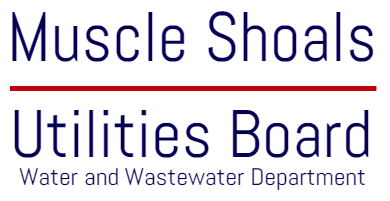Water Treatment Process
Rapid Mixing:
The untreated water is pumped to a rapid mix chamber and polyaluminum chloride (PAC) and chlorine dioxide are added.
Flocculation:
This slow mixing process allows the alum treated solids to stick together forming a heavier layer of particle known as floc.
Sedimentation:
The floc is separated from the water in this process. This physical settling process allows the floc to settle to the bottom of the tank and the clear water on top is then removed.
Filtration:
The clear water that is left is filtered to remove any remnant particles. To remove these particles, the water passes through two types of filters. The first type is a microfiltration process. The second type is a gravity filtration process that consists of varying types of sand and anthracite coal.
Fluoridation and Disinfection:
Fluoride to added to protect childrens teeth from decay and chlorine is added for disinfection.
PH Control:
pH control is the final step in the treatment process. Here the water is treated with a phosphate product which adjusts the pH to make it non-corrosive and allows a thin, protective coating to form on the pipe that serves as a barrier between the pipe and the water.
Wastewater Treatment Process
Wastewater from households and industrial use is collected through a series of pipes known as collectors. These collectors convey the wastewater to local pump stations which, in turn, pump the wastewater to the treatment plant.
A biological process referred to as activated sludge treats the wastewater for the City of Muscle Shoals. The waste is converted to a more stable material via this process and is then removed from the water and disposed of safely as a soil conditioner. The remaining water is disinfected and discharged into Pond Creek.
